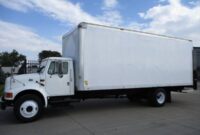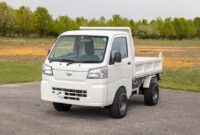Used 3500 Dodge Diesel Trucks For Sale: Your Ultimate Guide to a Heavy-Duty Workhorse pickup.truckstrend.com
For anyone requiring serious towing, hauling capacity, and legendary durability, the Ram 3500 (formerly Dodge Ram 3500) diesel truck stands as an undisputed champion. These heavy-duty pickups, powered by the iconic Cummins turbo-diesel engine, have earned their reputation as reliable workhorses capable of tackling the toughest jobs, from pulling large RVs and horse trailers to hauling commercial loads. Opting for a used 3500 Dodge Diesel truck offers a compelling value proposition, providing all the robust capabilities of a new truck at a significantly lower cost, making it an attractive choice for contractors, farmers, ranchers, RV enthusiasts, and anyone who demands uncompromising performance from their vehicle.
This comprehensive guide will navigate you through the world of used 3500 Dodge Diesel trucks, helping you understand their appeal, what to look for, common considerations, and how to make an informed purchase.
Used 3500 Dodge Diesel Trucks For Sale: Your Ultimate Guide to a Heavy-Duty Workhorse
Why Choose a Used 3500 Dodge Diesel? The Power of Proven Performance
The decision to buy a used 3500 Dodge Diesel truck is often driven by a blend of practical benefits and the inherent quality of the vehicle itself.
- Unmatched Cost Savings: New heavy-duty diesel trucks come with a hefty price tag. Buying used allows you to acquire a highly capable truck, often with many years of service life remaining, for a fraction of the cost. This significant initial saving can be reinvested into maintenance, upgrades, or simply kept in your pocket.
- Legendary Cummins Reliability: At the heart of most 3500 Dodge/Ram diesel trucks is the Cummins engine. Known globally for its incredible durability, longevity, and high torque output, the Cummins engine is a primary reason for the truck’s enduring appeal. These engines are designed to last hundreds of thousands of miles with proper maintenance, making a high-mileage used example far less daunting than a gasoline counterpart.
- Exceptional Towing and Hauling Prowess: The 3500 series is built for maximum capability. With robust chassis, heavy-duty suspension systems, and the immense torque of the Cummins engine, these trucks offer some of the highest towing and payload capacities available in a consumer-grade pickup. Whether you need to pull a fifth-wheel camper, a gooseneck trailer, or a substantial load in the bed, a 3500 is engineered for the task.
- Retained Value: Due to their robust construction and the highly sought-after Cummins engine, Ram 3500 diesel trucks tend to hold their value remarkably well. This means your investment is likely to depreciate slower than many other vehicles, providing a better return should you decide to sell it down the line.
- Abundance of Aftermarket Support: The popularity of the 3500 diesel has led to a vast aftermarket industry. Parts, upgrades, and customization options are readily available, making it easier to maintain, repair, or enhance your truck to suit specific needs.

Understanding the Generations and Key Features
Ram 3500 diesel trucks have evolved significantly over the years. Understanding the different generations helps in identifying specific features, potential issues, and overall capabilities.
- 2nd Generation (1994-2002): These trucks are celebrated for their simplicity and the venerable 12-valve (1994-1998.5) and 24-valve (1998.5-2002) 5.9L Cummins engines. The 12-valve is known for its mechanical P-pump fuel system, making it incredibly robust and easy to modify. The 24-valve introduced electronic injection but retained much of the 12-valve’s character. While older, many of these trucks are still running strong, a testament to their build quality.
- 3rd Generation (2003-2009): This generation saw the introduction of the Common Rail (CR) fuel system for the 5.9L Cummins (2003-2007.5), offering more power and refinement. Later 3rd gen trucks (2007.5-2009) transitioned to the 6.7L Cummins, which introduced exhaust gas recirculation (EGR) and diesel particulate filters (DPF) for emissions compliance. Interior quality improved significantly, and the Mega Cab option became available.
- 4th Generation (2010-2018): Ram separated from Dodge in branding during this era, though the truck retained its core identity. These trucks continued with the 6.7L Cummins, seeing continuous power and towing capacity increases. Refinements in the cabin, suspension, and technology were notable. Emissions systems became more complex, which can be a consideration for maintenance.
- 5th Generation (2019-Present): The latest generation offers the most modern amenities, highest towing capacities, and advanced safety features. While "used," these trucks will be newer and command higher prices, often featuring the High Output 6.7L Cummins for even greater performance.
When inspecting a used 3500, pay attention to the cab configuration (Regular, Quad, Crew, Mega Cab), bed length, and whether it’s a single rear wheel (SRW) or dual rear wheel (DRW – "dually") model. DRW trucks offer superior stability and higher payload/towing capacities, essential for heavy applications.
What to Look For When Buying Used: A Comprehensive Inspection Guide
Purchasing a used diesel truck requires a thorough inspection. Don’t let the Cummins engine’s reputation blind you to potential issues.
- Engine Health:
- Cold Start: Listen for excessive smoke (blue/white could indicate oil/coolant issues, black is often fuel-related but can be normal on start-up), strange noises, or difficulty starting.
- Fluid Leaks: Check under the truck for oil, coolant, or fuel leaks.
- Blow-by: Remove the oil fill cap while the engine is running. Excessive pressure or smoke indicates wear on piston rings or valves.
- Turbocharger: Listen for whistling or grinding noises, check for oil leaks around the turbo.
- Service Records: Look for consistent oil changes, fuel filter replacements, and any major component repairs (injectors, high-pressure pump).
- Transmission Performance:
- Test Drive: Ensure smooth, timely shifts in all gears, both up and down.
- Fluid Condition: Check the transmission fluid – it should be reddish and clear, not dark or burnt-smelling.
- Slipping: Any hesitation or slipping indicates potential problems.
- Drivetrain and Suspension:
- U-Joints & Driveshafts: Check for play or clunking noises.
- Differentials: Look for leaks around the covers.
- 4×4 System: If applicable, engage 4WD and ensure it works smoothly in high and low range.
- Steering: Check for excessive play in the steering wheel, and listen for clunks. Pay close attention to the front end components (ball joints, tie rods, track bar) known for wear on these heavy trucks, which can lead to "death wobble."
- Suspension: Look for broken leaf springs, worn shocks, and sagging.
- Chassis and Body:
- Rust: Inspect the frame, cab mounts, bed, and rocker panels thoroughly, especially if the truck comes from a salt-belt region.
- Accident Damage: Look for misaligned body panels, inconsistent paint, or signs of frame repair.
- Tires and Brakes:
- Tires: Check tread depth and even wear. Uneven wear can indicate alignment or suspension issues. Crucial for dually trucks that tires are matched.
- Brakes: Check rotor condition and pedal feel.
- Interior and Electronics:
- Test all lights, gauges, HVAC, power windows, locks, and infotainment systems.
- Look for any warning lights on the dashboard.
- Documentation: Always request the vehicle’s history report (CarFax, AutoCheck) to check for accidents, odometer discrepancies, and service history.
Crucial Advice: Pre-Purchase Inspection (PPI): Even if you’re mechanically inclined, it is highly recommended to have a qualified, independent diesel mechanic perform a pre-purchase inspection. They have specialized tools and expertise to identify issues you might miss.
Common Issues and Solutions for Used Dodge Diesels
While robust, no vehicle is immune to common issues. Knowing what to expect can help you budget for potential repairs or negotiate a better price.
- 5.9L Cummins:
- Lift Pump (24V VP44): Early 24V trucks with the VP44 injection pump are prone to lift pump failure, which can damage the injection pump. Aftermarket lift pump upgrades are common solutions.
- KDP (Killer Dowel Pin – 12V): A small dowel pin in the timing cover can back out and cause catastrophic engine damage. Most reputable 12V owners will have addressed this with a retaining kit.
- 53 Block (24V): Some 24V blocks from 1999-2001 (casting number "53") were prone to cracking in the water jacket. Not all 53 blocks crack, but it’s a known vulnerability.
- 6.7L Cummins:
- EGR/DPF Issues: Emissions control systems (EGR cooler, DPF, DEF system on newer models) can clog or fail, leading to costly repairs or reduced performance. "Delete" kits are available (where legal for off-road or competition use only) to remove these systems, but legality varies by state/country.
- Turbo Actuator: Electronic turbo actuators can fail, leading to reduced boost.
- Exhaust Manifold Cracking: Can occur due to heat cycles.
- Transmissions:
- 48RE (3rd Gen): While durable for stock power, modifications to the 5.9L can quickly overpower it. Many have been rebuilt or upgraded.
- 68RFE (4th Gen): Generally good, but valve body or solenoid issues can arise.
- Front End "Death Wobble": A common issue across 3rd and 4th gen Ram trucks, characterized by violent shaking of the front end over bumps. It’s typically caused by worn steering components (track bar, ball joints, tie rods, steering box). Regular inspection and replacement of these parts are essential.
- Rust: Especially prevalent in northern climates where salt is used on roads. Inspect frame rails, cab corners, rocker panels, and wheel wells.
Pricing Your Purchase: Factors Influencing Value
The price of a used 3500 Dodge Diesel can vary wildly. Key factors include:
| Factor | Impact on Price |
|---|---|
| Year/Generation | Newer generations are more expensive. Pre-emissions (5.9L) 3rd gen trucks often command a premium. |
| Mileage | Lower mileage generally means higher price, but diesels tolerate high mileage well if maintained. |
| Condition | Excellent condition (cosmetic & mechanical) fetches top dollar. |
| Engine | 5.9L Cummins can be more desirable for simplicity; 6.7L for power/modernity. |
| Transmission | Manual transmissions can sometimes fetch a premium among enthusiasts; Aisin automatics (newer 6.7L) are highly regarded. |
| Trim Level | Higher trims (Laramie, Longhorn, Limited) are more expensive than work-oriented trims (Tradesman, SLT). |
| Configuration | Crew Cab/Mega Cab and Dually (DRW) typically cost more than Regular Cab SRW. |
| 4WD vs. 2WD | 4WD models are generally more expensive due to their versatility. |
| Aftermarket Mods | Can increase or decrease value depending on quality and type (e.g., reputable lift kit vs. questionable engine tunes). |
| Service History | A well-documented service history adds significant value and peace of mind. |
| Geographic Location | Prices can vary by region due to demand, rust levels, and local market conditions. |
Estimated Price Table: Used 3500 Dodge Diesel Trucks For Sale (USD)
Please note: These are estimated price ranges and can fluctuate significantly based on exact mileage, specific trim level, options, modifications, service history, and regional market conditions. Always verify with current market data.
| Generation/Year Range | Engine Type | Typical Mileage Range | Condition | Estimated Price Range (USD) | Key Considerations


